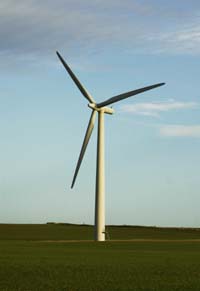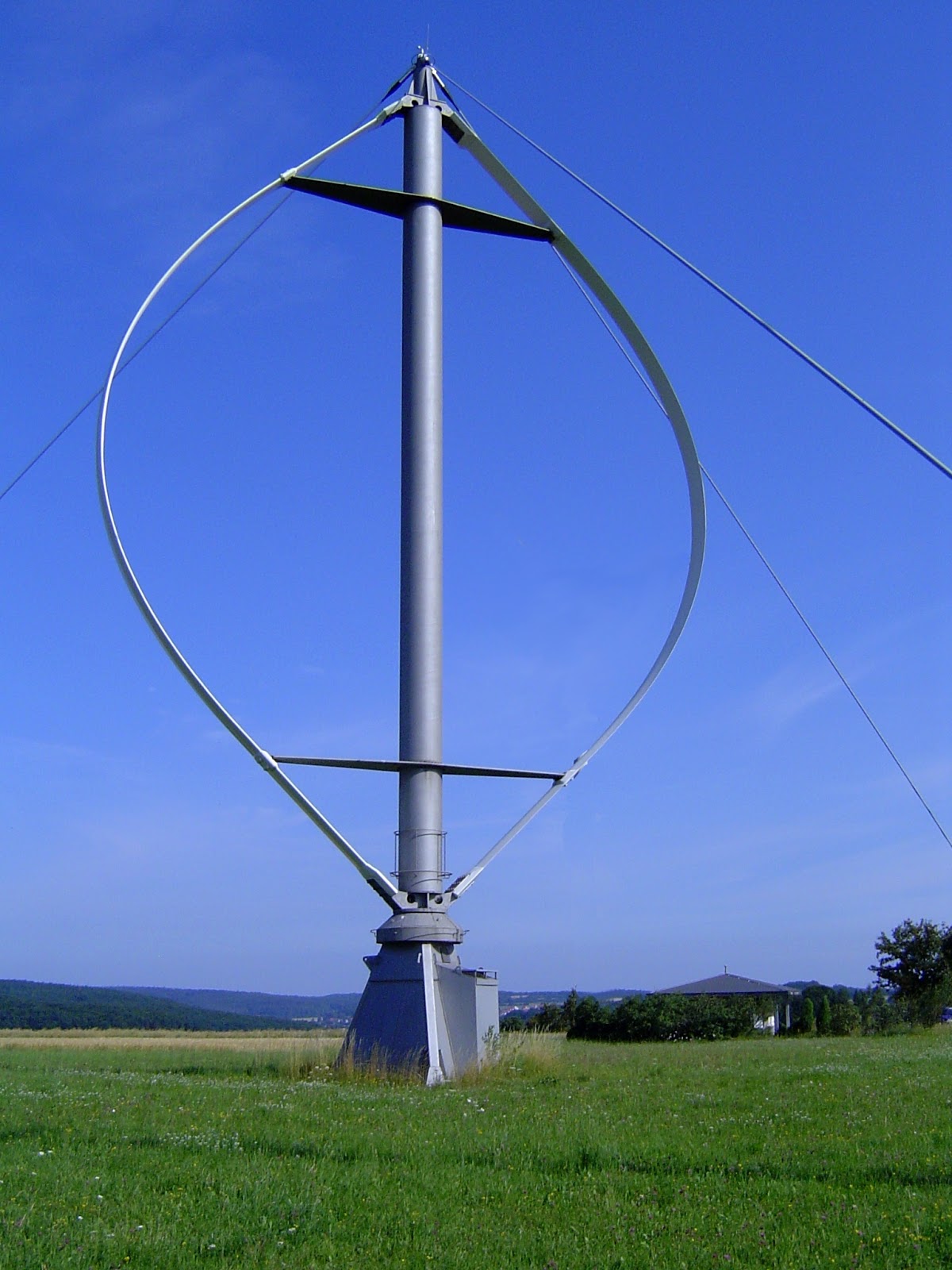5 HAWT vs. VAWT
HAWT – Horizontal Axis Wind Turbines
- The axis is of rotation is parallel to the ground.
- These are the most common type of turbines.
- Operates on lift principle

VAWT – Vertical Axis Wind Turbines
- This is an image of a Darrieus wind turbine.
- “Eggbeater” turbine is another name.
- It is one type of vertical axis turbine since its axis of rotation is vertical to the ground.
- Have not been very successful commercially
- Operates on lift principle

VAWT – Vertical Axis Wind Turbines
- H-Rotor is another type of VAWT
- It is a vertical axis turbine since its axis of rotation is vertical to the ground.
- It can self-start
- Have not been very successful commercially
- Operates on lift principle

VAWT – Vertical Axis Wind Turbines
- Savonius is another type of VAWT
- It is a vertical axis turbine since its axis of rotation is vertical to the ground.
- It can self-start
- Have not been very successful commercially
- Operates primarily on drag principle

Lift vs. Drag
- Lift turbines can theoretically capture 59% of the wind (Betz Limit)
- Drag turbines can theoretically capture 15% of the wind
- Drag turbine requires more material
source: Gipe, Paul. Wind Power. White River Junction, VT: Chelsea Green Publishing Company, 2004.
HAWT vs. VAWT

HAWT vs. VAWT
- HAWT – ADVANTAGES
- The wind is stronger at greater heights. A HAWT can be placed at heights to take advantage of strong winds.
- Good performance & reliability
- Self-starting
- Commercially successful
- VAWT – DISADVANTAGES
- The wind is weaker at ground level and there is more turbulence at ground level due to obstructions.
- Notorious for poor reliability since the lift forces reverse direction every revolution.
- Darrieus’ design can’t be self-starting unless orientated properly.
HAWT vs. VAWT
- HAWT – DISADVANTAGES
- Difficult to service due to height. In most models, a crane is needed to install a new generator or drivetrain.
- Needs yaw system to track the wind.
- VAWT – ADVANTAGES
- Generator & drivetrain is at ground level so that it is easier to service.
- It is omnidirectional so it does not need gears & controls to track the wind.
Horizontal Axis vs. Vertical Axis Turbines what are the advantages and disadvantages of each.

